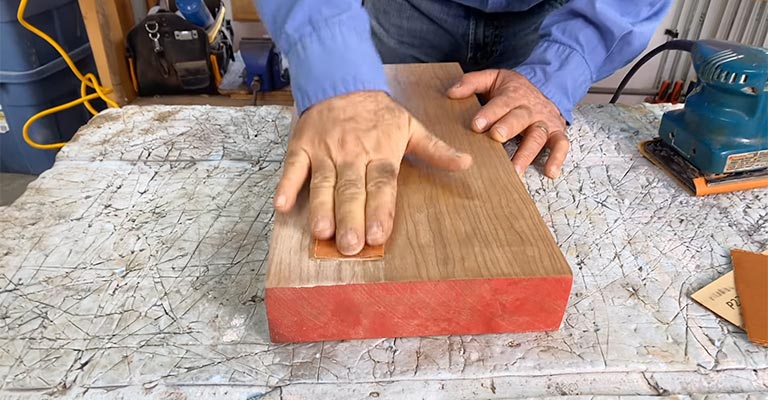If you’re embarking on a woodworking or refinishing project that involves applying polyurethane to achieve a smooth and protective finish, you may be wondering whether sanding between coats is necessary.
Sanding between coats of polyurethane is a common practice, and it plays a crucial role in ensuring the final result is both aesthetically pleasing and durable. So What happens if you don’t sand between coats of polyurethane?
It is important to sand the varnish before you apply it, otherwise the varnish may flake over time, especially if it is a hard surface. As a result, the surface will also become much smoother and easier to work with.
It is recommended that you lightly sand the surfaces between layers of polyurethane to prevent scratches. In addition to improving adhesion, sanding coats doesn’t affect previous coats.
It is sufficient to use 320 sandpaper for most applications. It is recommended, however, that fine-grit sandpaper such as 400 grit be used to achieve a perfect result.
Is Sanding Between Polyurethane Coats Really Necessary?
Generally, dust bits and other imperfections are removed by sanding between coats. The next coat should be applied after 24 hours. In this way, the mechanical bond between the coats will be strengthened.
Polyurethanes that dry quickly and polyurethanes that are water-based can be sanded, but they will still remain glossy.
Adhesion won’t be improved by this. It is essential to sand polyurethane between coats in order to achieve a flawless finish.
Four Easy Steps To Sand Polyurethane
You will need the following tools and materials
- Sandpaper can be used to sand small surfaces
- For large surfaces, use a random orbital sander
- Mineral spirit
- Formulation for polyurethane
- Brush, applicator, or roller
- Detergents and paint thinners
Step 1: Get The Surface Ready
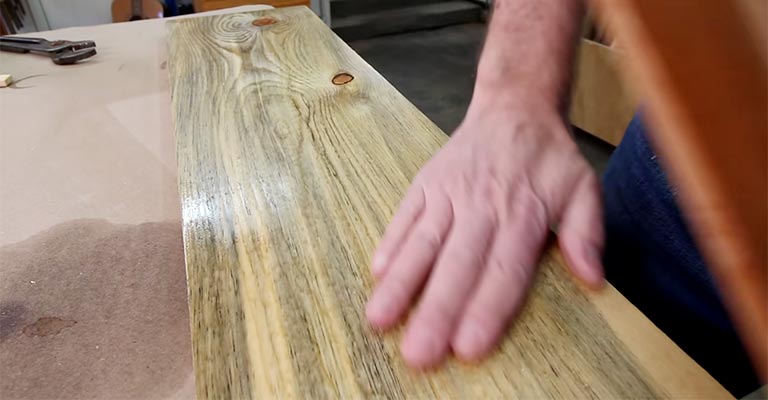
Rinse the surface thoroughly with warm water after removing all debris. Make sure the surface is clean by scrubbing it with a cleaning detergent. Grease, pencil marks, and stains can be among these imperfections. Allow the surface to dry after cleaning.
Step 2: Sand The Surface
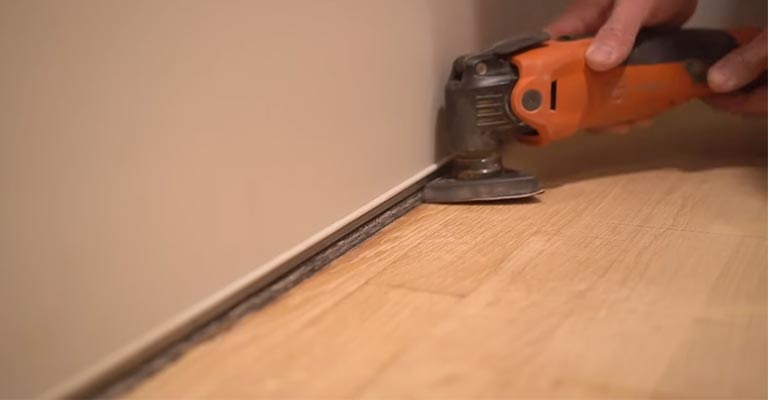
Low-grit papers are recommended. The first grit should be 100 grit, followed by 150 grit. 220 grit is the best choice for smooth surfaces and extra-fine finishes. The scuff-sand method is not necessary.
To clean the surface, use a clean, lint-free rag. After that, moisten it with a mineral spirit-watered rag. To finish, wipe it clean with a tackcloth.
Step 3: Stain (Optional)
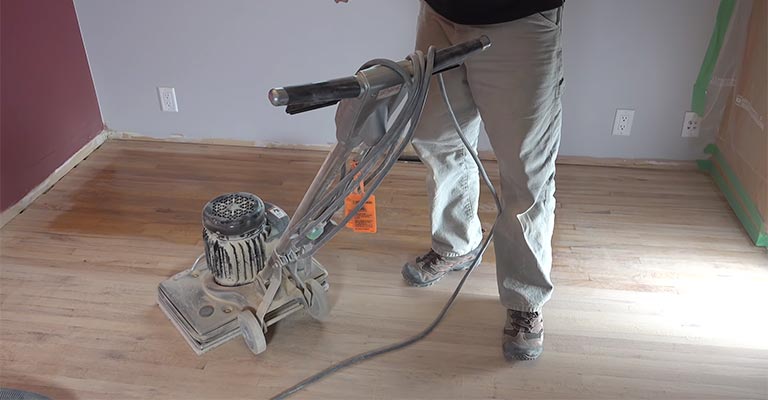
If you are using an oil-based poly, you should use an oil-based stain. Water-based stains can be sanded with 220-grit sandpaper after drying.
It is not always necessary to seal the surface before applying polyurethane multiple coats after staining and sanding.
Mineral spirits should be thinned first before sealing your stain with polyurethane.
Step 4: Coat With Undiluted Polyurethane
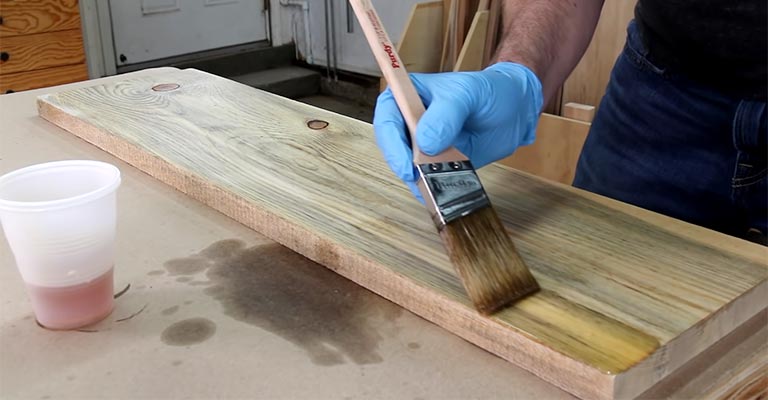
It is recommended that you allow water-based polyurethane to dry up to six hours before sanding the surface and applying polyurethane.
Sand and apply the next coat of polyurethane after drying oil-based polyurethane for at least 24 hours. Polyurethane can be applied in three thin layers on surfaces such as the floor.
When Sanding Between Coats Of Polyurethane, Why Do Some Types Require It And Others Do Not?
Due to the need to sand between poly coatings, time is of the essence. Polyurethanes that dry fast are more easily available than in the past due to the fact that they take longer to dry.
Between coats of fast-drying polyurethane, a special cloth treated with a tacky substance can be used to clean the wood surface.
Do Not Sand Between Polyurethane Coats?
To avoid serious injuries, many woodworkers believe that sanding is not necessary after polyurethane application.
When applying polyurethane coatings, it is fine to not sand. What is the purpose of asking this question for such a long time? Doing something without serious consequences is a waste of time.
What Happens If I Don’t Sand Between Coats Of Polyurethane?
Dust And Bubbles Will Be Trapped By Prior Coats
Before calling it a day, we will remove every last bit of dust and bubble from the poly. When applying polyurethane for the first time, bubbles are inevitable.
There may be dust specks on the wood surfaces if they were not cleaned properly prior to the polyurethane finish being applied.
It Is Impossible To Remove Brush Marks
Uneven brush marks can also occur when polyurethane is applied to wood floors.
For this reason, it’s important to search for high-quality foam brushes, even if you’re only going to apply one coat.
It is also possible to prevent uneven brush marks by cleaning the brush you use when applying polyurethane.
The final and final layer of polyurethane coating usually conceals these imperfections, even if brush strokes appear in the first and subsequent layers.
Previous Polyurethane Coats Won’t Adhere Seamlessly
You may notice streaks or discoloration on the surface if you don’t sand between layers of polyurethane.
Chemical solvents cannot bond to this formula. To make sure everything remains intact, apply a second coat of paint once the first layer is dry.
An oil-based polyurethane finish is applied over each coat. It does not always happen, however.
How Can I Avoid Sanding Between Polyurethane Coats?
Option 1: Choose Non-Sanding Products
It is even possible to use some polymers without touching any sandpaper. Water-soluble polyurethanes are usually used. A high-quality oil-based varnish is also available, which can be applied in a single coat.
Option 2: Avoid Glossy Finishes
Due to the fact that oil-based polyurethanes contain curing substances that resemble satin finishes, semi-gloss finishes are better than satin polyurethanes. This causes flaws to be more visible and subsequent coats to not adhere well.
Option #3: Apply A Single Coat Of Polyurethane
You can avoid the need for an additional coating by using an alternative strategy. The oil-based formula dries quickly, which is a good thing.
There are several challenges associated with working with one-coat poly, including its thick consistency and difficulty leveling. The quick drying time of poly ensures that brushstrokes, pencil marks, and dust nibs are clearly visible.
Different Types Of Polyurethane Finishes
Type Sheen
You will get a durable, flexible, shiny finish after High Gloss dries. An intermediate sheen between flat and gloss, semi-gloss is a polyurethane formulation. Despite its matte appearance, satin has some color and shine.
Modalities of application
It is also important to consider the method of application. Many people suggest wiping-on polyurethane varnish if they need a thin coating of it on their wood floors.
Water-Based
Polyurethane that is oil-based is more durable than polyurethane that is water-based. Most people prefer them because they have no odor and do not require much ventilation. As they dry quickly, your projects can also be completed quickly.
Oil-Based vs. Solvent-Based
Finishes based on oils and solvents contain VOCs. Ensure that the area is well ventilated before using them. There is a high level of resistance to chemicals and elements in these formulas. After the third coat is applied, the curing agents dry to a clear finish, but as they age, they turn yellow.
Polyurethane Has Many Benefits
The Gap Between Rubber And Plastic Is Filled
Compared to rubber, poly products can handle greater loads because they are more durable. In comparison to plastics, these formulas are more flexible. In high-traffic areas such as the garage floor, this is an excellent choice.
Abrasion-Resistant
Polyurethanes offer superior abrasion resistance compared to other plastics, elastomers, and metals. It is ten times stronger than other materials when it comes to abrasion resistance.
Resistant To Oil And Chemicals
Polyurethane coatings are commonly used on garage floors and kitchen tables to prevent chemicals from spilling. These surfaces can be coated with polyurethane since it has a high chemical resistance.
Highly Resilient
Hardness is measured by a product’s resilience. A polyurethane product is a good choice if you are looking for something that is highly resilient when applied to a surface. Afterward, the surface will be protected from shocks and dust caused by the sanding process.
FAQs
When Should I Apply Each Coat Of Polyurethane?
It is important to allow the polyurethane paint to dry completely before applying a second coat. It may take up to 24 hours for oil-based poly to dry, as opposed to 6 hours for water-based poly.
How Many Coats Of Polyurethane Can You Apply?
The minimum number of coats required for floors and similar surfaces is three. To apply the floor, you can use a brush, roller, or wipe. Your project will be protected for decades to come with the next coat.
How Many Coats Of Polyurethane Are You Using?
Your product won’t be damaged by additional polycoats in most cases. It can take weeks and cost more to sand extra coats. The wood won’t be protected by it.
What Is The Recommended Number Of Coats Of Polyurethane?
Three coats are recommended for a smooth finish. A two-coat paint job is sufficient for furniture that is not used often. For high-traffic areas like hardwood floors, don’t apply more than three coats.
Is The Final Coat Of Polyurethane Sanded?
Scratches and rough edges can be created by sanding the final coat of polyurethane. To achieve a smooth finish, sand only the last coat of polyurethane with fine sandpaper.
Is It Necessary To Use An Orbital Sander Between Polyurethane Coats?
Using woodworking tools like orbital sanders (or steel wool) between coats is not recommended.
Hand sanding is done with a flat block. As a result, the finish is smoother, more durable, and more durable.
To Sand Polyurethane Between Coats, What Grit Of Sandpaper Should I Use?
In most cases, 320 sandpaper will be sufficient. To achieve the best results, however, 400 grit sandpaper is recommended.
Does Spar Urethane Need To Be Sanded Between Layers?
It is easy to reapply spare urethane within 10-12 hours without the need for sanding. Using 220-320 grit paper, sand again after 24 hours. Streaks and bubbles will be removed this way. Apply a thin layer of urethane to the wood grain.
Is It Possible To Sand Between Layers Of Water-Based Polyurethane?
The water-based polyurethane must be sanded between layers to achieve a uniform and smooth finish. Whenever every layer dries within six hours, inter-coat adhesion is possible.
Do I Need To Sand Between Layers Of Minwax Polyurethane Or Minwax?
After applying Minwax Polyurethane, you should sand thoroughly. A 320 grit sandpaper can be used for removing fine dust from the surface.
Can Polyurethane Be Repainted Without Sanding?
Before you can refinish wood coated with polyurethane, you have to sand it. It’s better to use fine-grit sandpaper than not.
You’ll need 2 pieces of steel wool to sand the surface. The grain of the wood should be similar to how you spray polyurethane.
What’s The Best Way To Smooth Polyurethane?
A final coat of polyurethane can be smoothed out with a light sanding either dry or wet. The dry sanding method only uses sandpaper, the wet method uses mineral spirits and water.
Is It Okay Not To Sand Between Layers Of Polycrylic?
Polycrylic shouldn’t be sanded between layers. Dust and grain will clog up the first coat, causing the topcoat to stick badly to the basecoat. The application will also be uneven instead of smooth.
Final Words
Applying more coats and sanding multiple times can be time-consuming and expensive. By skipping this step, the polyurethane won’t stick to the previous coat and will eventually peel away.
If you want to start over, you’ll need more coats. You’ll spend more if you don’t sand between polyurethane coats.

